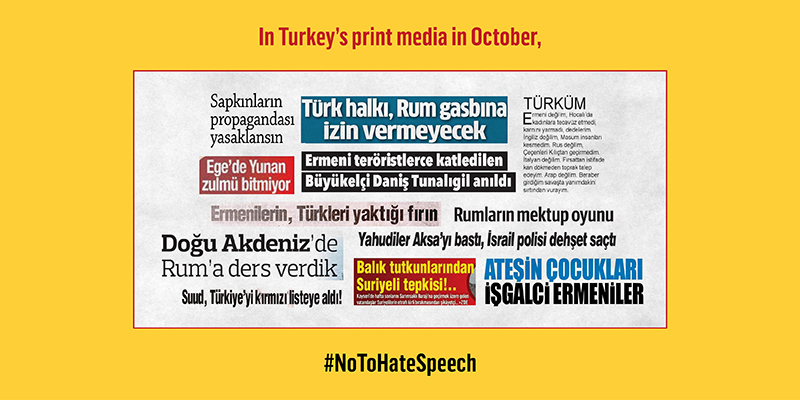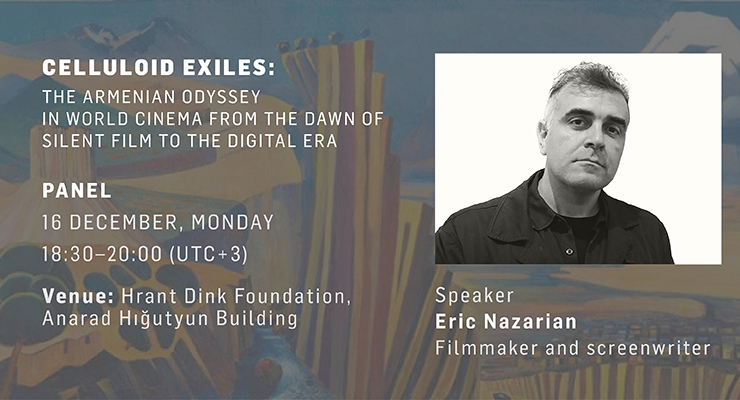The monthly reports of the Media Watch on Hate Speech present examples of news articles and columns from the printed press that contain hate speech and target national, ethnic, and religious groups. A selection of articles (news clippings or personal columns) that contain hate speech is analysed and documented, using the method of critical discourse analysis. The aim is to raise awareness about the widespread use of hate speech in the printed press and the groups that are systematically subjected to hate speech.
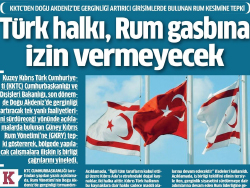
In the article “The Turkish people will not allow Greek Cypriot seizure,” published in Milli Gazete, political tension between the two sides in Cyprus is expressed with an emphasis on Greek Cypriot identity. Describing the event as “Greek Cypriot seizure” in the headline reinforces negative judgments about identity and amounts to hate speech. The Turkish-Greek Cypriot duality in the headline fuels conflict between Turkish and Greek Cypriot identities.
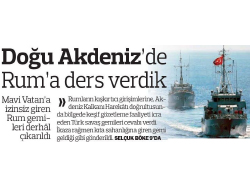
The newspaper Türkiye emphasises and generalises Greek identity in the article “We taught Greek Cypriots a lesson in the eastern Mediterranean,” which is about political tension in Cyprus. The article targets the identity, by using aggressive language about Greek Cypriot, and reinforces hostility.
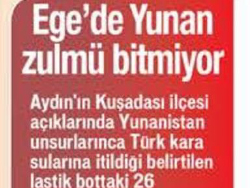
The news article headlined “Greek cruelty in the Aegean does not end,” published in Manşet Aydın newspaper, is about Greek security forces pushing migrants back into Turkish territorial waters near the town of Kuşadası. The article indicates Greek identity with the phrase “Greek cruelty” in the headline, reinforcing existing prejudices and hostility towards Greeks by associating their identity with “cruelty.”

The article, “The Oven Where Armenians Burned Turks,” is a very unique example of the concurrence of disinformation and hate speech. It directly targets Armenian identity, associating it with violence and oppression. Throughout the article, accusations that Armenians massacred Turks and Muslims are given space to charge Armenian identity with committing atrocities. In this way, the article reinforces existing hostility against an identity.
Additional information: The population of the town of Kozan in Adana province, where the building the article describes was located, was almost 70 percent Armenian in 1914. Nine schools, 10 churches, two monasteries, three cemeteries and one orphanage belonging to Armenians were located in Kozan. Today, almost no Armenians remain in Adana. Detailed information about Adana's cultural heritage is available at Turkey’s Cultural Heritage Map and Armenian Cultural Heritage Map of Adana, prepared by the Hrant Dink Foundation
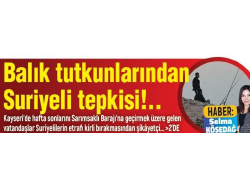
The newspaper Kayseri Anadolu Haber’s article headlined “Fish Lovers React to Syrians” includes statements from Kayseri residents about environmental pollution. The article claims Syrians dirty the environment and holds Syrian identity as responsible for environmental pollution. This situation reinforces prejudices prevalent in society that “Syrians are not clean” and feeds discrimination. It depicts Syrians’ enjoyment of their civic rights as a problem and produces discourse that could put access to those rights at risk.
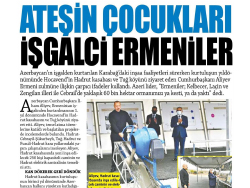
Yeni Akit’s article “Occupying Armenians, Children of Fire” targets Armenian identity, based on statements by Azerbaijani President Ilham Aliyev. The article designates the identity as an “occupier,” portrays Armenians as a threat with the expression “children of fire” and blames Armenian identity for the destruction of forests in Nagorno-Karabakh. The entire article produces hate speech, engendering hostility against the Armenian identity.
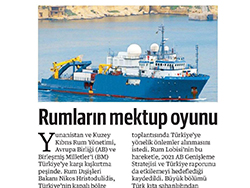
In an article published by Yeni Şafak newspaper under the headline “Greek Cypriots’ Letter Game,” a letter sent by the Cypriot foreign minister to the EU and the UN is referred to as a "Greek Cypriot game". This signifies Greek Cypriot identity as a threat by associating it with conspiracy theories. By reinforcing existing prejudices about identity, Greek Cypriots are targeted.
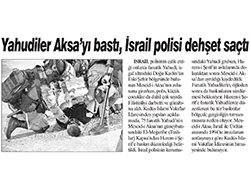
In the article “Jews Raid Aqsa, Israeli Police Spread Terror” published by Günboyu Newspaper, responsibility for an attack on Al-Aqsa Mosque in Jerusalem is generalised to “the Jews,” blaming Jewish identity in the headline. The use of a provocative headline incites hostility between identities.
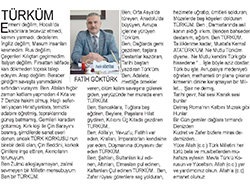
In the column called “I am a Turk” in Köyceğiz Newspaper, historical events are distorted to associate Armenian identity with sexual violence, Russian identity with massacres, Italian identity with war and hostility and Arabs with betrayal. The generalisations glorify Turkish identity when compared to others. The other identities are correlated with evil, violence and barbarism, while the Turkish identity is lionised as purely heroic with success stories. A hierarchy is established among the identities.
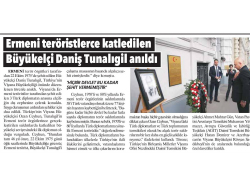
In the article headlined “Ambassador Daniş Tunalıgil, who was murdered by Armenian terrorists, is commemorated” in an Aydınlık newspaper, several repetitions of the expressions “Armenian terrorist” and “Armenian terrorist organisation” in the text correlate Armenian identity with terrorism and violence. Thus, prejudices against identity are reinforced and the perception of hostility towards Armenians is fueled.
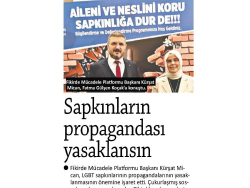
In an interview published by Yeni Akit, LGBTI+ people are associated with “perversion” in the headline. Throughout the article, LGBTI+ people are described as “deviants,” depicting them as part of conspiracy theories that are widely featured in the media. The article also seeks to legitimise prohibiting LGBTI people’s freedom of expression and right to assemble by presenting LGBTI+ people as a “threat” to society.

Yeni Mesaj newspaper emphasises “Saudi” in the story headlined “Saudis have put Turkey on the red list!” about a Saudi Arabian decision on pilgrimages. The emphasis on and generalisation of identity strengthens a perception of hostility by making identity a target.

